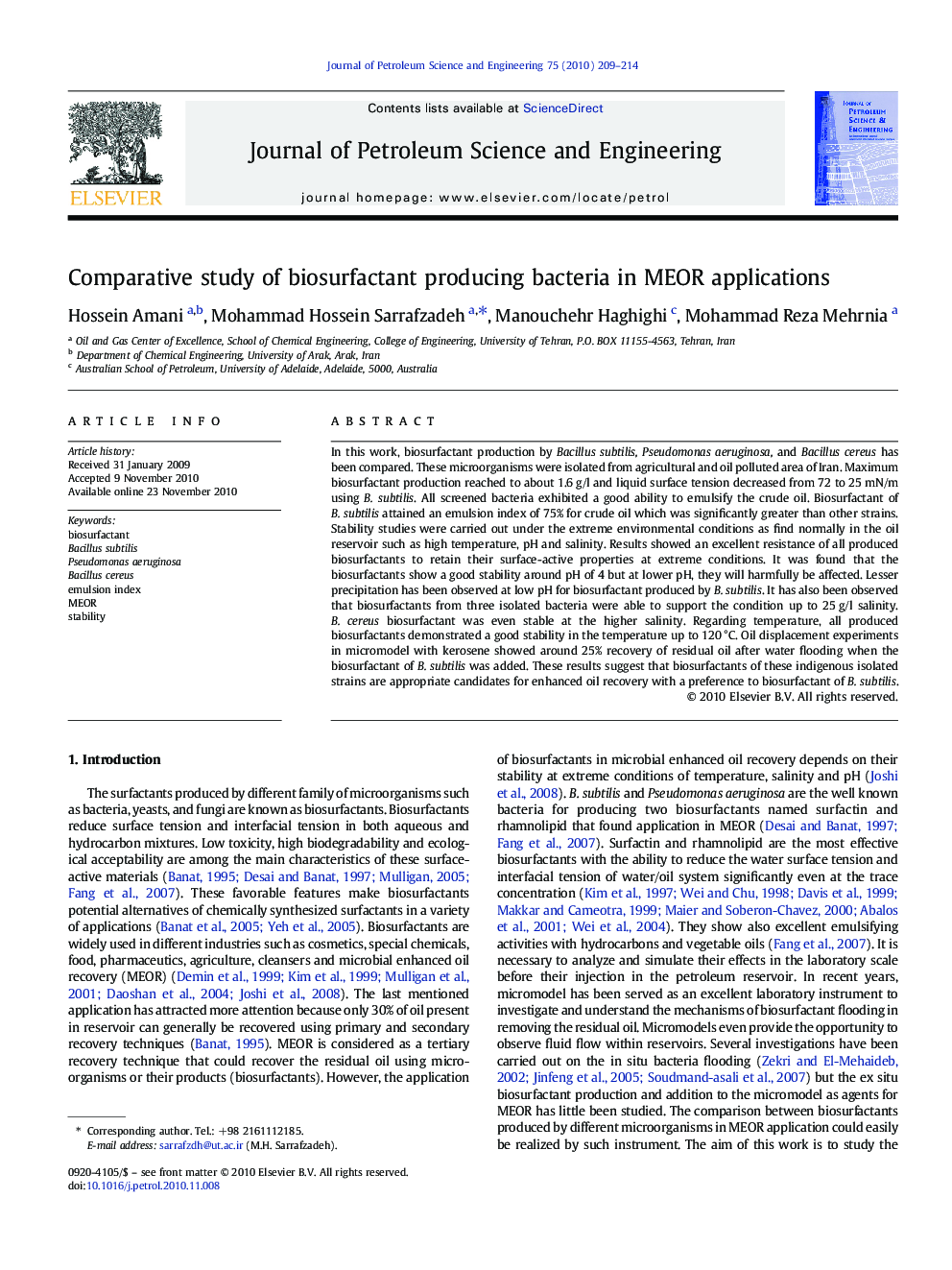| Article ID | Journal | Published Year | Pages | File Type |
|---|---|---|---|---|
| 8127599 | Journal of Petroleum Science and Engineering | 2010 | 6 Pages |
Abstract
In this work, biosurfactant production by Bacillus subtilis, Pseudomonas aeruginosa, and Bacillus cereus has been compared. These microorganisms were isolated from agricultural and oil polluted area of Iran. Maximum biosurfactant production reached to about 1.6 g/l and liquid surface tension decreased from 72 to 25 mN/m using B. subtilis. All screened bacteria exhibited a good ability to emulsify the crude oil. Biosurfactant of B. subtilis attained an emulsion index of 75% for crude oil which was significantly greater than other strains. Stability studies were carried out under the extreme environmental conditions as find normally in the oil reservoir such as high temperature, pH and salinity. Results showed an excellent resistance of all produced biosurfactants to retain their surface-active properties at extreme conditions. It was found that the biosurfactants show a good stability around pH of 4 but at lower pH, they will harmfully be affected. Lesser precipitation has been observed at low pH for biosurfactant produced by B. subtilis. It has also been observed that biosurfactants from three isolated bacteria were able to support the condition up to 25 g/l salinity. B. cereus biosurfactant was even stable at the higher salinity. Regarding temperature, all produced biosurfactants demonstrated a good stability in the temperature up to 120 °C. Oil displacement experiments in micromodel with kerosene showed around 25% recovery of residual oil after water flooding when the biosurfactant of B. subtilis was added. These results suggest that biosurfactants of these indigenous isolated strains are appropriate candidates for enhanced oil recovery with a preference to biosurfactant of B. subtilis.
Related Topics
Physical Sciences and Engineering
Earth and Planetary Sciences
Economic Geology
Authors
Hossein Amani, Mohammad Hossein Sarrafzadeh, Manouchehr Haghighi, Mohammad Reza Mehrnia,
